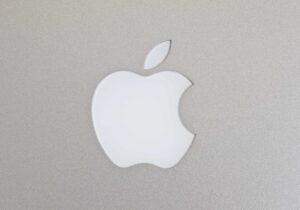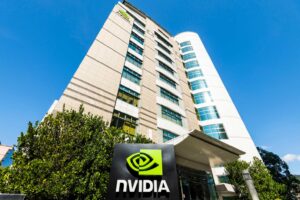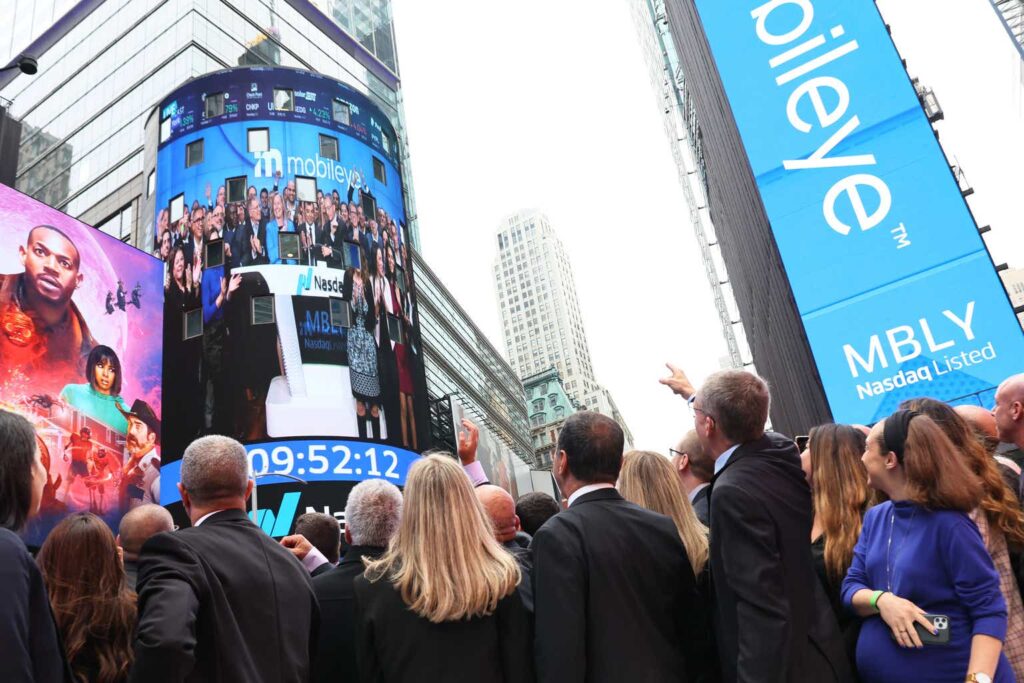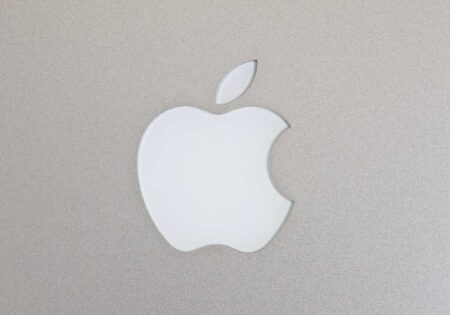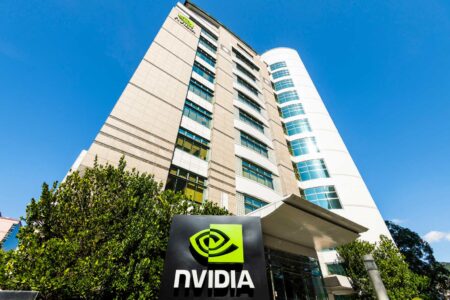Investment Thesis
The growth rate of Mobileye (NASDAQ:MBLY) seems to have cooled a bit down in the last year. However, this is arguably because it is the calm before the storm with regards to the adoption of next-gen (partly) autonomous driving systems. These have a price of between 1 and 2 orders of magnitude larger than legacy ADAS solutions. As such, the potential for Mobileye to literally grow 10x in revenue over time remains very real.
Background
In my previous coverage half a year ago, I discussed the clarification that Mobileye does not intent to become a robotaxi provider. This seemed like a big, missed opportunity, as history has shown that the service level can be much more lucrative than just providing hardware. Since Mobileye has an industry-leading autonomous driving stack, the best way to monetize this differentiated asset would be clearly by using this to create a global robotaxi business.
Nevertheless, given the potential size of this market, between the data center and PC markets, and given that the price of an autonomous driving stack is closer to that of a server than a PC, the potential size for just selling hardware still seems large.
Mobileye Has Bailed Out Of Robotaxis
Q3 results
Results were decent, with a 34% adjusted operating margin, although not akin to the high growth rates seen in years past.
On a year-over-year basis, we grew the top line 18% adjusted operating income grew 27% and adjusted net income grew 59%.
Business update
Mobileye said it is not materially impacted by the war.
Probably the most material update was that it said its bookings were on track to exceed the $6.7B in revenue design wins generated in 2022. Obviously, if Mobileye has this performance every year, then at some point revenue should equal this amount.
The first launch of an EyeQ Kit (ADAS) product, which is a program that allows OEM to adapt the software, is expected in early 2024. The overall portfolio for these solutions span the entire L1-5 range, with Mobileye noting “tremendous progress” overall.
Mobileye also added the first customer of SuperVision light, which is a lower-end configuration, with the customer being a large global OEM, with adoption expected in high-volume vehicles. Mobileye also added more regular SuperVision and Chauffeur design wins. As a reminder, SuperVision is L2+ (hands-free, eyes on) whereas Chauffeur is true L4 (hands-free, eyes off).
As noted, while Mobileye will not operate a robotaxi network itself, it will obviously still offer such hardware and software solutions for partners to operate. In that regard, Mobileye noted its hardware, software and imaging radar sensor are all on track. Nevertheless, this should be taken with a grain of salt as the announcements in 2019-2020 all pertained to initial launches around the world in 2022-2023, a timeline that was clearly not achieved. The only updated information Mobileye provided was for a fleet of 10k vehicles in Hamburg by 2030. As mentioned, on the Chauffeur (consumer vehicle) side, the first launch is slated for late 2024, with more in 2025-26.
Lastly, Mobileye noted the OTA (over the air) update to 100k vehicles of the NAP (navigate on autopilot) feature of SuperVision, providing the hands-free capability, and effectively officially beating Tesla (TSLA) in the road towards autonomous driving. Mobileye also said it will receive a portion of the software revenue from adopters of this feature, boosting gross margin over time.
Moreover, Mobileye observed that this proof point has led to significantly increased general OEM interest as well as urgency in (adopting) these higher-end features, at least in China.
I can’t emphasize enough that this over-the-air update amplified a flywheel dynamic that’s been developing for the last year or so. The industry has noticed a higher pace of innovation and a significant growth in demand in China for systems that take over more and more of the driving. This creates higher pressure among all OEMs to develop competitive hands-free systems. To generate value from software but also not to fall behind. This pressure forces more emphasis on pragmatic factors like time to market, cost and performance as opposed to the desire to in-source this creates higher demand demo OEMs for the Mobileye product, which offer clear advantages in time-to-market cost and performance. Deploying the software in more than 100,000 consumer vehicles and receiving many accolades in the world’s most competitive market, clarified our ability to deliver and serve as the final component in the flywheel. We felt the impact of this proof point immediately. The successful rollout led directly to the FAW design win and an acceleration of progress towards potential design wins with other key prospects.
What I mean by acceleration is that there is an increased urgency to converge towards production programs. This is reflected as more clarity from customers on next steps, for example, the clear deliverables, time line and approval processes. While the design win process rarely moves as fast as we want, we expect that we’ll have more news on SuperVision and Chauffeur over the next 5 months. I’ll put some numbers against it. Last quarter, we disclosed that we either have already booked design wins or were in advanced stages for SuperVision and or chauffeur design wins with 9 OEMs representing 30% of global automotive production. That number is now 10 OEMs, representing 34% of auto production. If we go back to the beginning of 2023, that number would have been 3 OEMs representing 9% of the industry.
Valuation
Mobileye does have a premium valuation for being the industry leader in the ADAS market, and transitioning this market to more higher-end features for safer and more autonomous driving, with the valuation being reminiscent to the likes of Nvidia (NVDA).
As noted, Mobileye’s growth rate is currently not as high as Nvidia or even its own historical growth, but the market potential is clear, and proven by the massive amount of bookings (in dollar terms) the company received in both 2022 and 2023. Since even today there are still basically no fully autonomous vehicles on the market, it is still the early innings. For example, if history on the side of PCs with Intel (INTC), AMD (AMD) and Nvidia, and smartphones with Qualcomm (QCOM) is any indication, then Mobileye’s valuation might well reach over $100B over time.
For now, a $35B valuation represents 17x P/S and over 50x P/E. Looking at the consensus estimates, revenue is seen growing towards $5B by 2026 and reaching over $10B over time. For investors with a 5-10 year horizon, and really that is the main kind of investors for this stick given the current valuation, that means the current valuation could decrease to less than a 10x P/E or 3x P/S over time.
Risks
Mobileye’s main competitors besides some in-house developments efforts from the likes of Tesla and NIO (NIO) are Nvidia and Qualcomm. While these are respectable silicon development companies with expertise in respectively graphics/AI and wireless connectivity, neither of these segments’ required knowhow is directly applicable for the development of autonomous driving systems. Mobileye’s leadership position does not seem extremely challenged currently, but it might not become an absolute monopoly like Nvidia is currently enjoying in the data center market.
The other risk is on the (financial) execution and demand side. Even disregarding some of the unknowns and delays towards L4 solutions, while a L4 stack is expected to cost several thousand dollars, that would still require a volume of several million units to reach $10B in scale. For comparison, the newer cloud-enhanced ADAS and SuperVision products are taking about half a decade or so to reach that (million unit) scale.
Of course, in the bullish case, ultimately every single vehicle would become an autonomous one, delivering the safety and productivity benefits of the technology on a global scale, which would represent a market of tens of millions of units or over $100B in size.
Investor Takeaway
While the financial progress has not been terrific or specifically noteworthy in 2023, Mobileye is nevertheless making steady progress in moving up the technology stack with a broad portfolio. The most compelling such progress is that SuperVision’s NAP feature is now in deployment across over 100k vehicles, which in turn has increased interest from other OEMs to (more) quickly deploy such advanced capabilities, leading to more design wins for its highest-value SuperVision and Chauffeur products. On the robotaxi side, though, significant deployments are still not announced.
With regards to the impact on the top and bottom lines, more significant adoption is expected in 2025 and 2026, with for example over 1 million SuperVision systems expected (cumulatively) by 2026. Even that probably won’t be enough yet though to justify the valuation which remains very stretched at 17x P/S and over 50x P/E.
While there is potential for Mobileye to 5-10x (or even more) its revenue over the next decade or so, this means the stock is clearly one for the patient, as the likelihood of an explosion in adoption and demand, as for example Nvidia has seen, is practically zero.
Read the full article here

